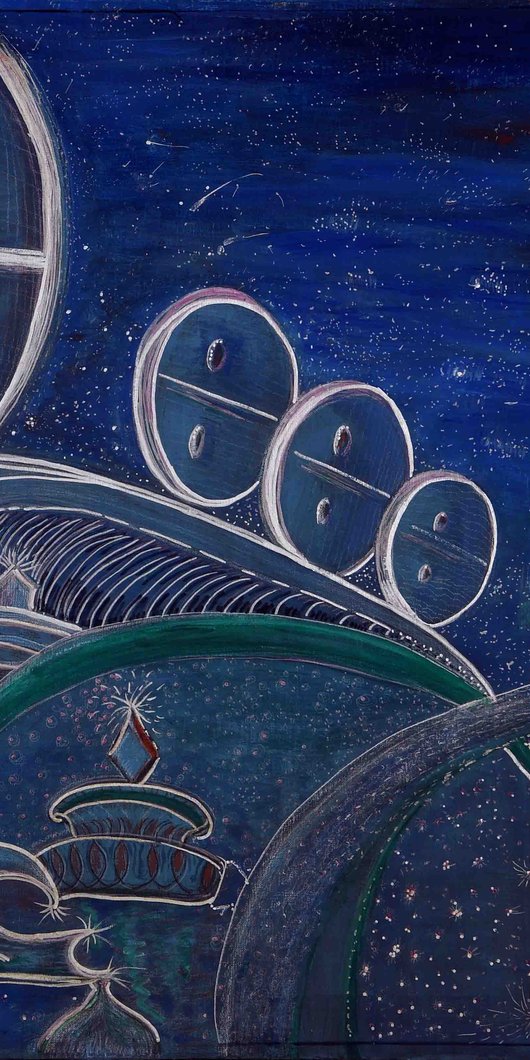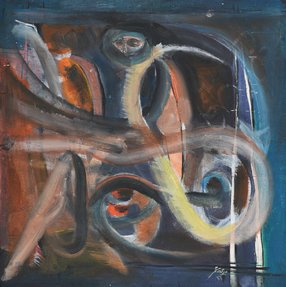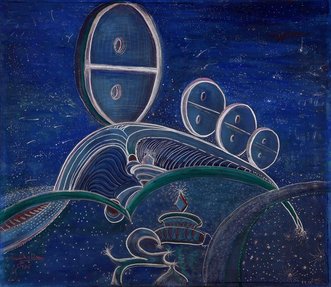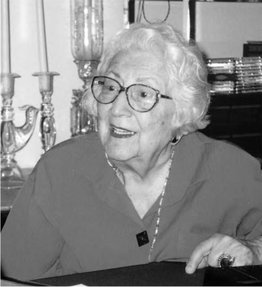Madiha Umar (1908 – 2005), a prominent Arab modernist artist, was instrumental in forming the Hurufiyya movement in mid twentieth-century Iraq. Born in Aleppo, Syria, and raised in Iraq, where she became a naturalised citizen, Madiha immersed herself in the region’s post-Ottoman state, replete with intricate calligraphy on Islamic buildings and burgeoning cultural growth from Iraq’s ancient empires to modernity.
Her education continued in Beirut and Istanbul before she became one of the first women sent by the Iraqi government on a scholarship to England, where she pursued formal art education at Maria Grey Training College, the first teacher training college for women in the country. Upon returning to Baghdad in 1933, Madiha was appointed head of the Department of Arts at the Teachers Training College for Women during a time when Iraq was investing heavily in art education.
The 1940s was the artist’s decade of transition. After moving to Washington, D.C., in 1942, Madiha pursued her art education at George Washington University, where she discovered the works of the Iraqi-American scholar of Islam, papyrology and paleography Nabia Abbott, whose research focused on the early development of Arabic calligraphy. This provided the foundational principle for Madiha’s aesthetical approach to the Arabic script, which involved the conversion of letters from their traditional contexts to abstract forms while preserving their transcendental essence. For the artist, the letter can expand beyond its graphic qualities, existing as a free form, independently withholding the connection to words.



